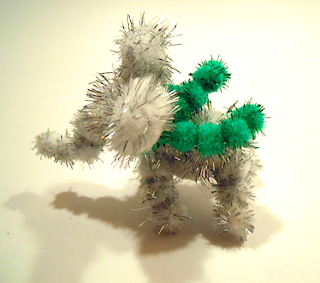It's another crazy day—and I'm sure there will be many more before Christmas—so I decided to work with something simple again: pompoms.
In the world of needlework, pompoms are related to tassels and fringe, but differ in that they are round. Usually attached to a string or cord, allowing them to sway freely, pompoms are found in virtually every world culture. They generally decorate clothing and accessories, as well as soft furnishings, stuffed toys and ceremonial items.
The military hats of many nations often sport pompoms, with colour usually designating rank or regiment. In Asia, the Mien women of Thailand are known for their long black jackets trimmed with pompoms, and the festival dragons paraded through the streets at Chinese New Year are usually festooned with pompoms in various colours.
The military hats of many nations often sport pompoms, with colour usually designating rank or regiment. In Asia, the Mien women of Thailand are known for their long black jackets trimmed with pompoms, and the festival dragons paraded through the streets at Chinese New Year are usually festooned with pompoms in various colours.
 |
| Head of a Chinese New Year dragon, adorned with multicoloured pompoms. Source: http://new-year-card.blogspot.com/2010/12/new-year-dragon-card.html |
In Peru, the traditional clothing of both men and women features pompoms. The colour of a man's pompom-topped hat, and the way it is worn, indicates whether he is married, engaged or single. Women's skirts have different colours of pompoms attached to the hems, and pompoms worn at the back of the leg indicate different things, depending on colour: a multicoloured pompom, or several colours of pompom, means happiness, for example, while a mostly blue pompom suggests sadness.
In Greece, the official national costume worn by the
Presidential Guard features large black pompoms on the toes of the
shoes. And in Scotland, the traditional Balmoral cap is dark blue, green or brown, and is usually decorated with a red pompom.
 |
| A typical Balmoral cap. Source: http://www.scotsconnection.com/Scottish-Gifts/ Scots-Bonnets/Balmoral-Bonnet---Diced/p-69-240-1463/ |
I couldn't find any real information on how or where the pompom originated, but some speculate that it was created by accident. Traditional knitted hats were often finished by tying a simple knot at the top, leaving several loose strands of yarn. When these strands frayed, they eventually formed a ball of fluff.
For today's elephant, I bought four packages of "tinsel-poms" and "glitter-poms" for a dollar each. My original idea was to simply glue them to a piece of board, but then I decided they would look better if I sewed them together. I also remembered that I never liked the feel of hardened glue on a pompom when I was a kid, so sewing made more sense.
The pompoms came in multiple colours and three sizes—the different sizes came in handy for this particular elephant.
I started with one of the largest white/silver pompoms for the head, then added pompoms in the next two sizes down for a trunk.
Next came the ears. I used two of the large pompoms for these, flattening them a bit by drawing a couple of stitches through the centre of each.
I stitched three large pompoms together for the body and made some legs, which I then attached. Attaching the legs was actually the hardest part of this whole thing, because it took me a while to figure out how to make them all stay at a sensible angle. One or the other kept trying to stick out, probably because of the way I pulled the thread through the legs and then back through the body.
I sewed the head to the body next. At this point, I decided that the legs were too short, so I sewed another mid-sized pompom to the bottom of each leg.
It looked a bit plain when I was done, so I decided to add a scarf made of the smallest green pompoms. To give the scarf a bit of shape and make it look like it was blowing in the wind, I sewed on the final pompoms at a bit of an angle.
This turned out better than I expected. The strands of tinsel, or whatever the silver bits are made of, came out all over the place, but otherwise it was an easy elephant to make, and held its shape surprisingly well.
Sparkly and slightly tacky I know, but what are the holidays without a bit of silly glitz?
Elephant Lore of the Day
Among some African peoples, elephants are traditionally believed to have mystical powers. The Shona of southern Africa, for example, called the long bony protrusions along an elephant's temples "wisdom sticks" and believed that they allowed elephants to know the time and place of their death.
That is why, they say, very old elephants often separate from the herd, looking for a place where they can die alone and in peace.
Elephants are also considered omniscient. If a hunter encounters an elephant with its trunk curled around its head, he knows that a tragedy has occurred at home. And, if the hunter sees an elephant flinging dirt over its back, he knows that his wife is swimming or bathing: something she is not supposed to do while he is out hunting.
Finally, elephants are believed to keep track of their age by swallowing a pebble a year.
To Support Elephant Welfare
World Society for the Protection of Animals
Elephant sanctuaries
(this Wikipedia list allows you to click through to information on a number of sanctuaries around the world)
Performing Animal Welfare Society
Zoocheck
Bring the Elephant Home
African Wildlife Foundation
Performing Animal Welfare Society
Zoocheck
Bring the Elephant Home
African Wildlife Foundation











No comments:
Post a Comment